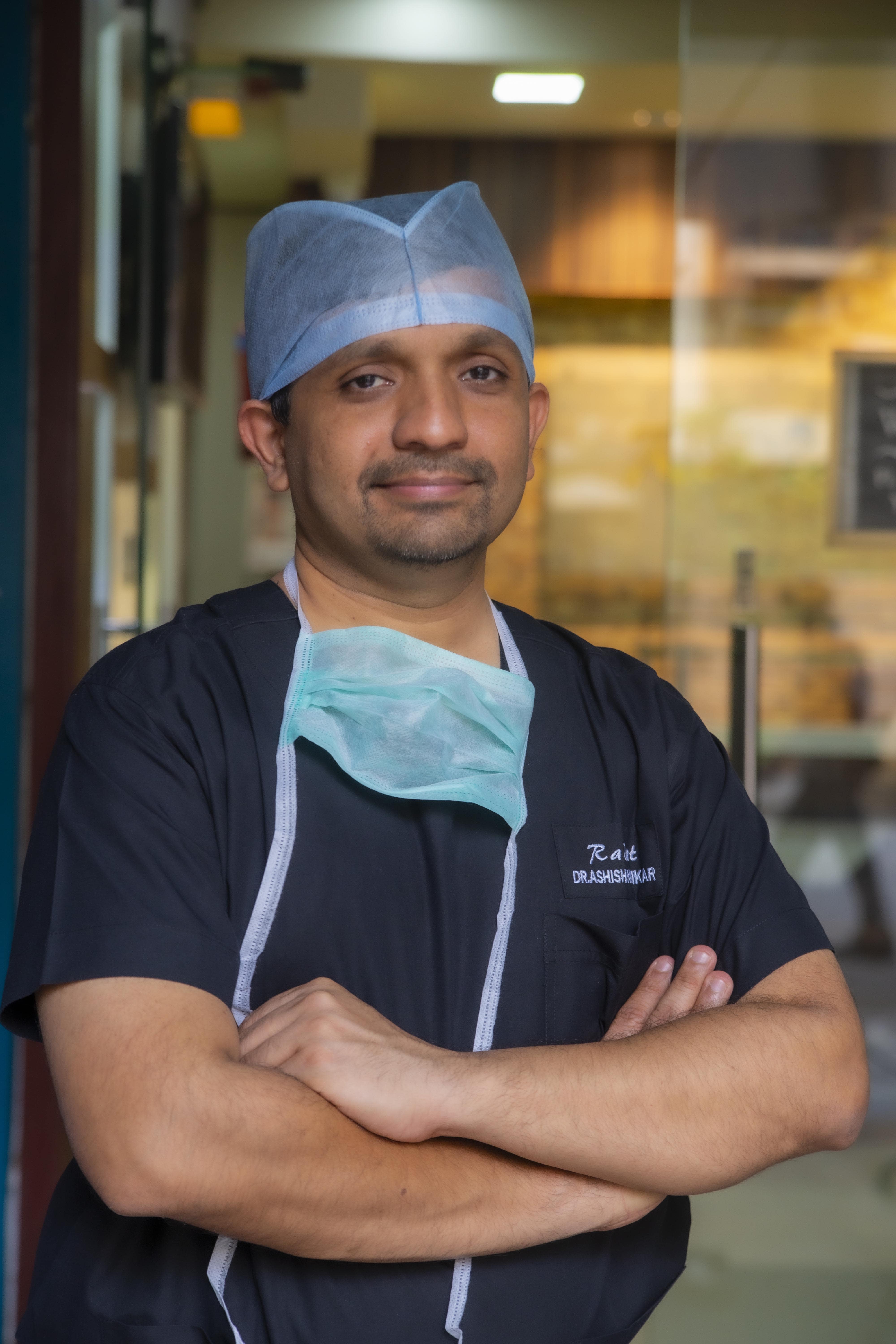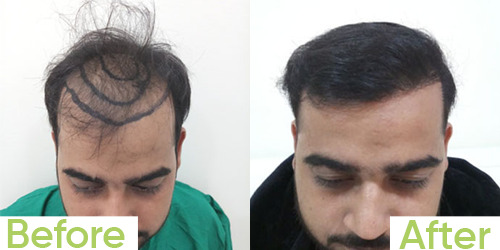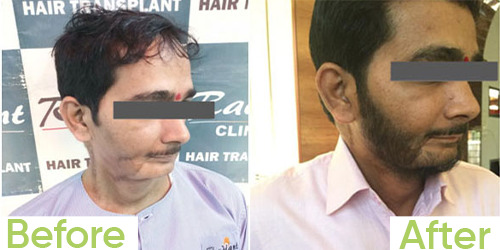Best Hair Transplant In Navi Mumbai - Restore Clinic
If you are considering a hair transplant in Mumbai, Restore Clinic is an excellent choice for your hair restoration needs. Restore Clinic is renowned for its expertise in providing highly effective solutions for hair restoration and has established a strong reputation for delivering top-quality services. The clinic offers cutting-edge hair transplant procedures utilizing the latest techniques and state-of-the-art equipment. With a team of experienced and skilled surgeons who specialize in hair transplantation, Restore Clinic ensures exceptional results.
Hair Transplant Procedure in Navi Mumbai
At Restore Clinic in Navi Mumbai, we offer advanced solutions for hair loss through our meticulous hair transplant procedure. Our skilled specialists understand the significance of a full head of hair, and we are dedicated to providing natural-looking results that boost your confidence.
1. Consultation
Begin with a detailed consultation to discuss hair loss concerns, medical history, and expectations. Our specialist assesses hair loss extent and suggests suitable treatment.
2. Anesthesia:
Local anesthesia administered to numb areas for minimal discomfort during procedure.
3. Graft Harvesting:
Individual hair follicles harvested from donor area using FUE technique for natural results.
4. Recipient Site Creation:
Small incisions made in recipient area with precision to accommodate graft placement.
5. Graft Placement and Follow-Up:
Carefully place prepared grafts into incisions, ensuring proper angle and placement. Post-operative follow-up appointments to monitor healing and progress.
Hair Transplant surgery cost in Navi Mumbai
On average, hair transplant surgery cost in Navi Mumbai might range from ₹ 30,000 to ₹ 1,20,000 or more. The cost of hair transplant surgery in Navi Mumbai can vary based on several factors, including the clinic's reputation, the experience of the medical team, the extent of hair loss, the chosen technique (FUE or FUT)
| Number of Hair Grafts | Average Low Cost | Average high cost | Number of sitting requires |
|---|---|---|---|
| 500 | ₹ 30,000 | ₹ 40,000 | 1 |
| 1000 | ₹ 40,000 | ₹ 45,000 | 1 |
| 1500 | ₹ 50,000 | ₹ 55,000 | 1 |
| 2000 | ₹ 60,000 | ₹ 80,000 | 1-2 |
| 2500 | ₹ 70,000 | ₹ 90,000 | 1-2 |
It is Important to consult with our Doctor for exact cost
Hair Transplant Surgeon in Mumbai
Dr. Ashish Sangvikar
(Plastic, Cosmetic & Hair Transplant Surgeon)
Dr. Ashish Sangvikar is a board-certified plastic, cosmetic, and microvascular reconstruction surgeon. He obtained his M.Ch in Plastic Surgery from Grant Medical College & J.J. group of hospitals, Mumbai. Following his plastic surgery residency, he gained valuable experience at the renowned Tata Memorial Hospital in Mumbai, where he received specialized training in microvascular reconstruction surgery.
Dr. Ashish Sangavikar is a skilled hair transplant surgeon at Restore Clinic located in Navi Mumbai. With a passion for restoring hair and confidence, Dr. Sangavikar is dedicated to providing exceptional hair transplant services to his patients. At Restore Clinic, patients can expect a comprehensive approach to hair restoration, utilizing advanced techniques under the expertise of Dr. Sangavikar.
Whether you're looking for hairline restoration, FUE (Follicular Unit Extraction), FUT (Follicular Unit Transplantation), or other hair-related treatments, Dr. Ashish Sangavikar at Restore Clinic in Navi Mumbai can provide personalized solutions to meet your needs.

DR. ASHISH SANGVIKAR
(Plastic, Cosmetic & Hair Transplant Surgeon )Hair Transplant Methods
Hair transplant is a surgical procedure used to treat hair loss or baldness by transplanting healthy hair follicles from one part of the body, typically the back or sides of the scalp (donor area), to the bald or thinning areas (recipient area). There are two main methods of hair transplant: Follicular Unit Extraction (FUE) and Follicular Unit Transplantation (FUT),
Follicular Unit Extraction (FUE):
FUE is a minimally invasive technique where individual hair follicles are extracted directly from the donor area using a small punch tool. The surgeon makes tiny incisions in the recipient area and places the extracted follicles one by one. FUE leaves small, almost invisible scars, and has a shorter recovery time compared to FUT.
Follicular Unit Transplantation (FUT)
FUT involves removing a thin strip of scalp from the donor area, usually the back of the head, and then dissecting it into individual follicular units under a microscope. These units are then transplanted into the recipient area. FUT may leave a linear scar, but it's often hidden by surrounding hair.
Direct Hair Implantation (DHI):
Similar to FUE, DHI involves extracting individual hair follicles from the donor area. However, in DHI, the follicles are implanted directly into the recipient area without the need to create recipient site incisions beforehand.
Types of Hair Transplant
Navi Mumbai offers a range of advanced hair transplant procedures tailored to address specific needs, whether it's restoring thinning hair, enhancing facial hair, or refining eyebrows. These procedures are carried out by skilled professionals who are well-versed in the latest techniques. Let's explore some of the key options available
Beard Hair Transplant:
Beard hair transplant is a specialized procedure aimed at enhancing or restoring facial hair in areas where it's sparse or absent. It generally involves the same techniques as traditional hair transplantation, such as FUT or FUE.
Eyebrow Hair Transplant:
Eyebrow hair transplant addresses thinning or missing eyebrows due to factors like over-plucking, genetics, or medical conditions. The FUE technique is often used for this purpose. Hair follicles are taken from the donor area (usually the scalp) and meticulously transplanted into the eyebrow region to achieve a natural-looking result.
Body Hair Transplant:
This type of transplant involves using hair from various parts of the body as donor hair. It's typically considered when the scalp donor area lacks sufficient hair. Body hair, such as chest, back, or even leg hair, can be used for transplantation.
Scar Revision Hair Transplant:
Scar revision involves using hair transplantation to camouflage scars resulting from surgeries, accidents, or previous hair transplant procedures. Hair is transplanted into the scar tissue, helping to conceal the scar and create a more aesthetically pleasing result.
Female Hair Transplant:
Hair transplant also used for females experiencing hair loss or thinning. The techniques used for female hair transplant are generally the same as those for males, but the approach might be different based on factors like hairline design and the pattern of hair loss unique to women.
Why Choose Restore Clinic for Hair Transplant in Navi Mumbai
When it comes to restoring your hair and regaining your self-confidence, choosing the right clinic for a hair transplant is paramount. Among the options in Navi Mumbai, Restore Clinic shines as a beacon of excellence in the field of hair restoration. In this overview, we delve into the reasons why Restore Clinic stands out as a preferred destination for a hair transplant in Navi Mumbai.
Expert Surgeons: Skilled and experienced hair transplant surgeons dedicated to providing top-notch results.
Advanced Techniques: Utilizes the latest hair transplant techniques for optimal outcomes and minimal discomfort.
Personalized Approach: Tailors each treatment plan to individual needs, ensuring natural-looking results.
Follow-up Care: Comprehensive post-procedure guidance for proper healing and long-term hair health.
Positive Reviews: Strong track record of satisfied patients sharing their success stories.
High Success Rate: A track record of successful hair transplants that speak to their expertise and commitment.
Results of Hair Transplants at Restore Clinic


Frequently Asked Questions:
A good candidate for hair transplant is someone who has experienced hair loss or thinning hair and has enough healthy hair follicles in the donor area to be transplanted to the recipient area. Candidates should be in good overall health and have realistic expectations for the outcome of the procedure.
The three most important things to know about hair transplant candidacy are:
Candidates should have enough healthy hair follicles in the donor area to be transplanted to the recipient area.
Candidates should be in good overall health and have realistic expectations for the outcome of the procedure.
Candidates should consult with a qualified hair transplant surgeon to determine if they are a good candidate for the procedure.
Like any surgical procedure, hair transplant carries some risks and potential complications. These may include bleeding, infection, scarring, and poor results. However, these risks can be minimized by choosing a qualified and experienced hair transplant surgeon and following post-operative care instructions carefully.
The three most important things to know about risks and complications associated with hair transplant are:
Hair transplant carries some risks and potential complications, including bleeding, infection, scarring, and poor results.
These risks can be minimized by choosing a qualified and experienced hair transplant surgeon and following post-operative care instructions carefully.
Patients should discuss the risks and potential complications with their surgeon prior to the procedure.
The recovery period for a hair transplant can vary depending on the individual and the extent of the procedure. In general, patients can expect some mild discomfort, swelling, and redness in the days following the procedure. Most patients are able to return to work within a few days, but strenuous activity and exercise should be avoided for at least a week or two after the procedure. The transplanted hair will typically fall out within a few weeks of the procedure, but new hair growth should begin to appear within a few months.
The three most important information about the recovery period for a hair transplant are:
The recovery period can vary depending on the individual and the extent of the procedure
Patients can expect some mild discomfort, swelling, and redness in the days following the procedure
The transplanted hair will typically fall out within a few weeks of the procedure, but new hair growth should begin to appear within a few months

